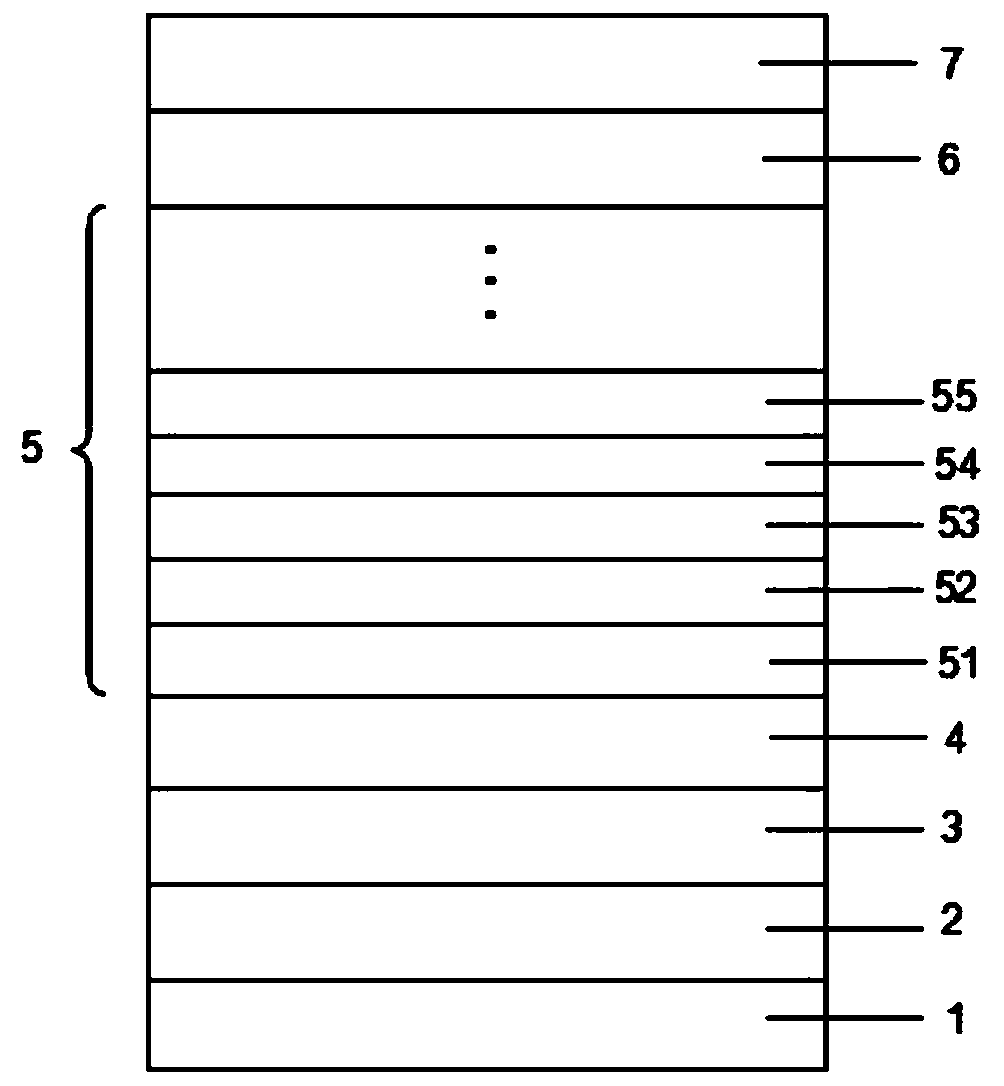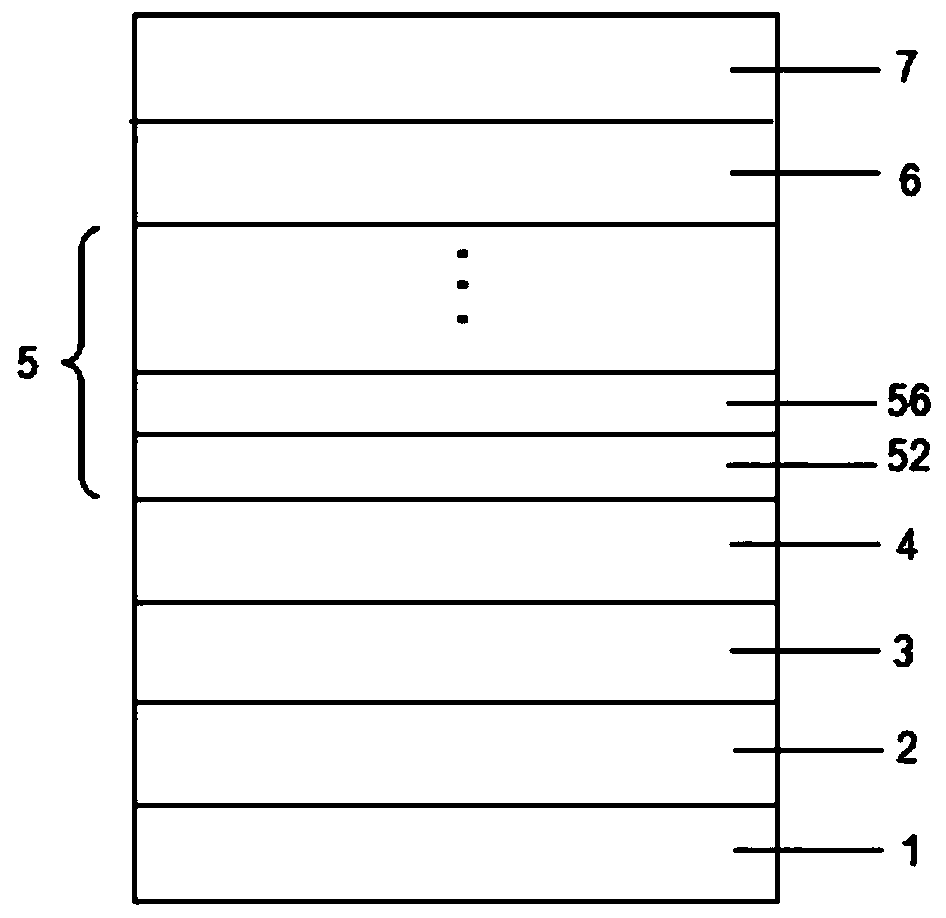LED epitaxial growth method capable of improving luminous efficiency
A technology of epitaxial growth and luminous efficiency, applied in gaseous chemical plating, coating, electrical components, etc., can solve the problems of low quantum well growth quality and low quantum well radiation recombination efficiency, so as to improve luminous efficiency and suppress lateral Growth, the effect of promoting three-dimensional growth
- Summary
- Abstract
- Description
- Claims
- Application Information
AI Technical Summary
Problems solved by technology
Method used
Image
Examples
Embodiment 1
[0041] This embodiment adopts the LED epitaxial growth method for improving luminous efficiency provided by the present invention, adopts MOCVD to grow GaN-based LED epitaxial wafers, and uses high-purity H 2 or high purity N 2 or high purity H 2 and high purity N 2 The mixed gas as the carrier gas, high-purity NH 3 As the N source, the metal-organic source trimethylgallium (TMGa) is used as the gallium source, trimethylindium (TMIn) is used as the indium source, and the N-type dopant is silane (SiH 4 ), trimethylaluminum (TMAl) as the aluminum source, and the P-type dopant as magnesium dicene (CP 2 Mg), the reaction pressure is between 70mbar and 900mbar. The specific growth method is as follows (for the epitaxial structure, please refer to figure 1 ):
[0042] An LED epitaxial growth method for improving luminous efficiency, comprising sequentially: processing a substrate 1, growing a low-temperature buffer layer GaN2, growing an undoped GaN layer 3, growing a Si-doped...
Embodiment 2
[0074] Comparative examples are provided below, that is, the growth method of the traditional LED epitaxial structure (for the epitaxial structure, please refer to figure 2 ).
[0075] Step 1: At a temperature of 1000-1100°C and a reaction chamber pressure of 100-300mbar, feed 100-130L / min of H 2 Under the conditions, process the sapphire substrate for 5-10 minutes.
[0076] Step 2: growing a low-temperature GaN buffer layer, and forming irregular small islands in the low-temperature GaN buffer layer 2 .
[0077] Specifically, the step 2 is further as follows:
[0078] At a temperature of 500-600°C and a reaction chamber pressure of 300-600mbar, 10000-20000sccm of NH is introduced 3 , 50-100sccm TMGa, 100-130L / min H 2 Under the condition of , growing the low-temperature GaN buffer layer 2 on the sapphire substrate 1, the thickness of the low-temperature GaN buffer layer 2 is 20-40nm;
[0079] At a temperature of 1000-1100°C and a reaction chamber pressure of 300-600mbar,...
PUM
| Property | Measurement | Unit |
|---|---|---|
| thickness | aaaaa | aaaaa |
| thickness | aaaaa | aaaaa |
| thickness | aaaaa | aaaaa |
Abstract
Description
Claims
Application Information
 Login to View More
Login to View More - R&D
- Intellectual Property
- Life Sciences
- Materials
- Tech Scout
- Unparalleled Data Quality
- Higher Quality Content
- 60% Fewer Hallucinations
Browse by: Latest US Patents, China's latest patents, Technical Efficacy Thesaurus, Application Domain, Technology Topic, Popular Technical Reports.
© 2025 PatSnap. All rights reserved.Legal|Privacy policy|Modern Slavery Act Transparency Statement|Sitemap|About US| Contact US: help@patsnap.com



